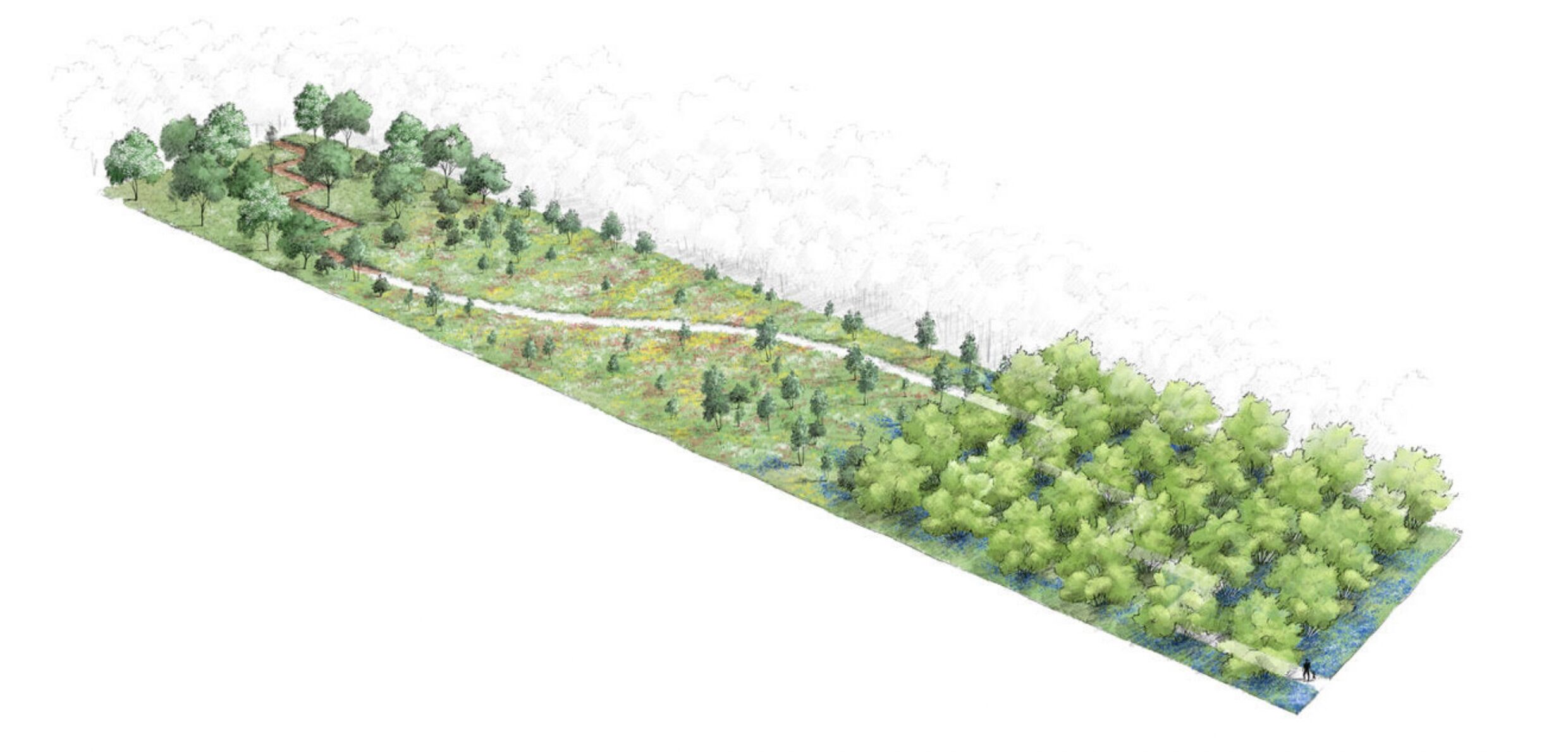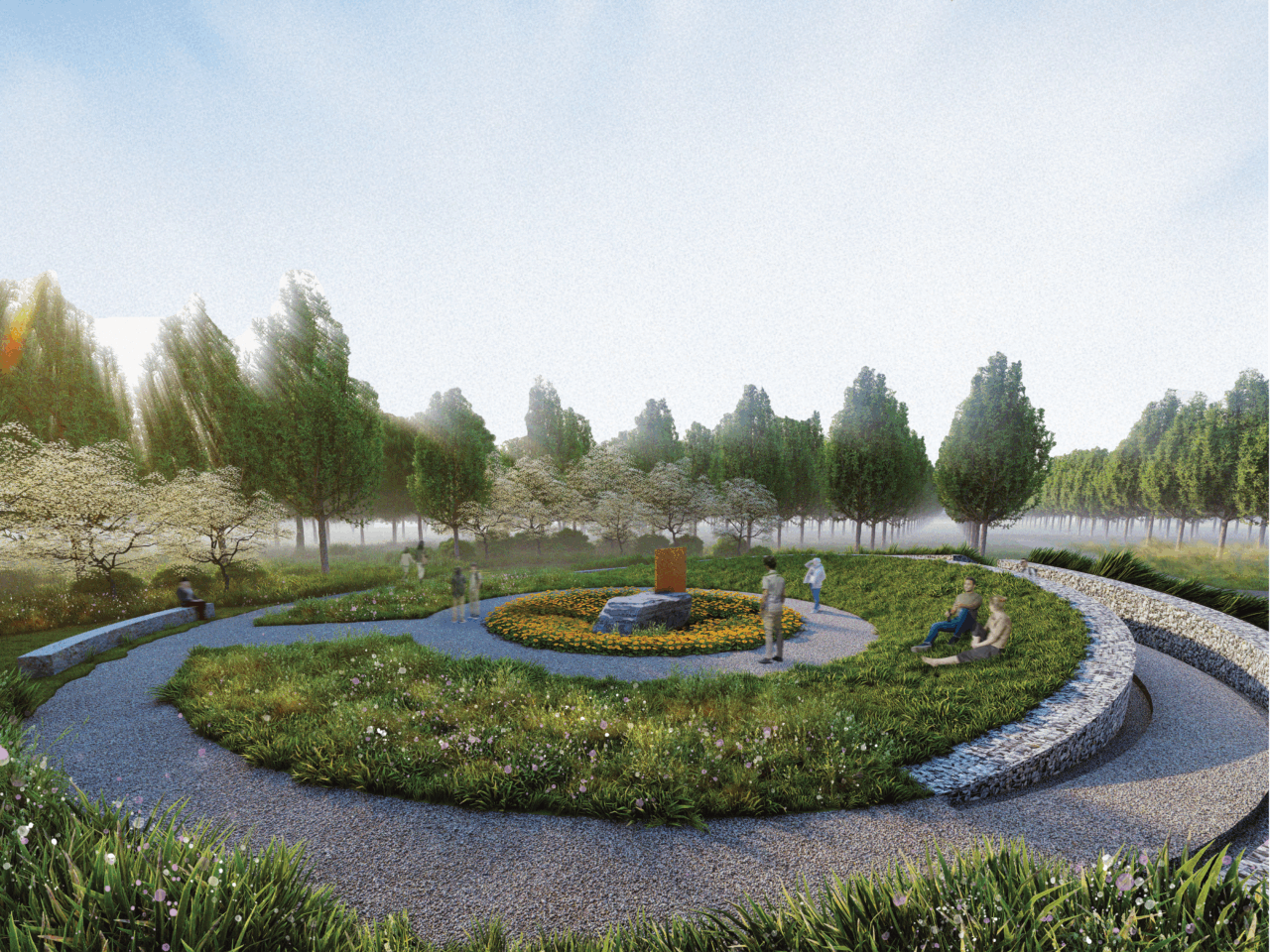Indian Garden of Peace – “Hues of Peace”, 2025
Hues of Peace is a project designed to honour the sacrifices of Indian soldiers on the grassy plains of Richebourg. Set within a 30 by 30 metre plot, this garden is a space of memory and serenity, paying tribute to the blood, sweat, and tears of those who gave their lives far from their homeland.
The garden is laid out as a vibrant meadow, celebrating life and promoting peace. A circular path, dotted with planted areas and a stone bench, surrounds a central sculpture and invites visitors to pause and reflect. At the entrance, gabion walls symbolising wartime trenches offer an immersive experience, while a gently sloping mound provides a contemplative space.
Carnations, a symbol of sacrifice for fallen soldiers of the First World War, frame the central sculpture in homage to the deceased. This sculpture, made of Corten steel, features perforations that evoke the wounds of the soldiers. Its stone base is designed to hold messages left by visitors, echoing the letters soldiers once wrote to their loved ones.
The garden enhances the site’s aesthetic value while supporting the local community and improving ecological impact. A wetland area attracts insects, birds, and butterflies. The landscape evolves with the seasons: lush greenery in spring and vibrant blooms in summer.
This multifunctional garden welcomes educational activities for local schoolchildren, the community, and visitors. Ceremonies and commemorative events can also be held here, such as planting carnations in memory of the fallen soldiers.
The project’s objectives are focused on sustainability and functionality:
-
90% of the vegetation requires low maintenance,
-
50% of the landscaped area is multifunctional,
-
80% of the garden offers an immersive and transformative experience,
-
100% of the site is based on sustainable principles.
This holistic approach ensures a lasting tribute to Indian soldiers while promoting peace and a connection with nature.
Overall, Hues of Peace is a thoughtfully designed project that blends history, remembrance, and community engagement with sustainability and natural beauty — making this a meaningful and unique space for all who visit.





